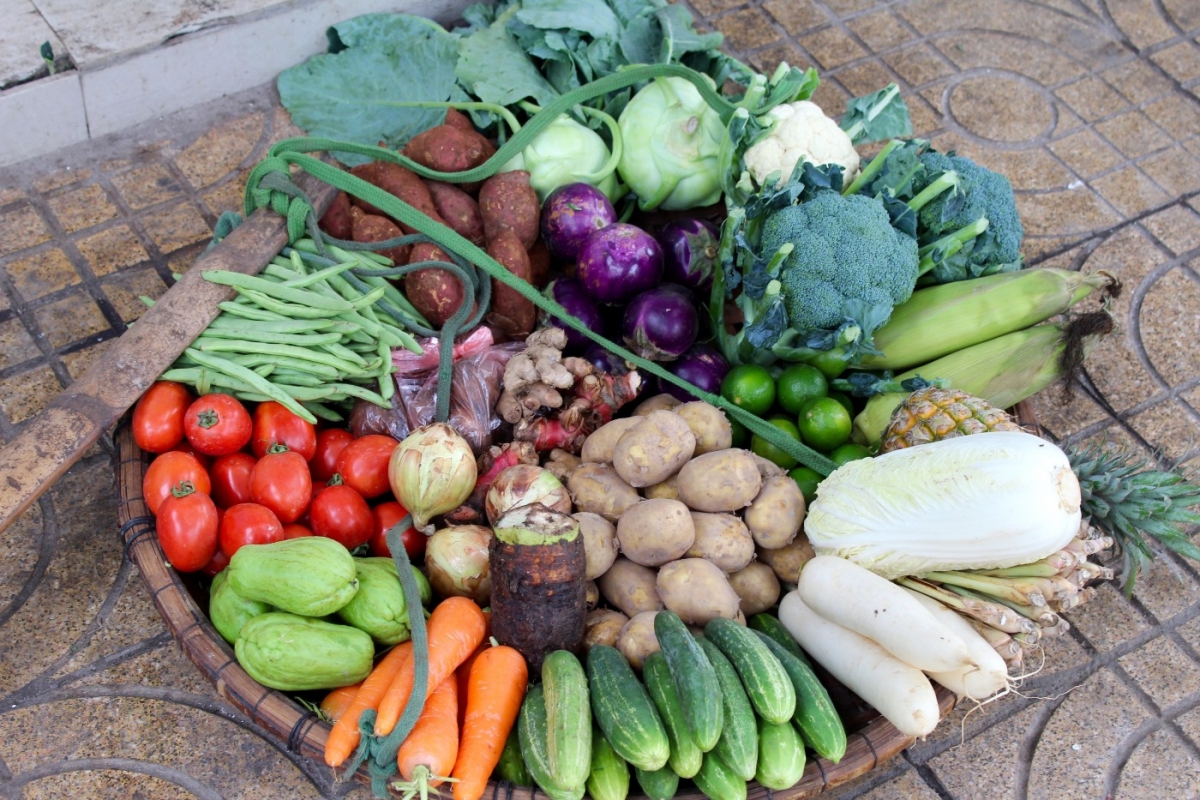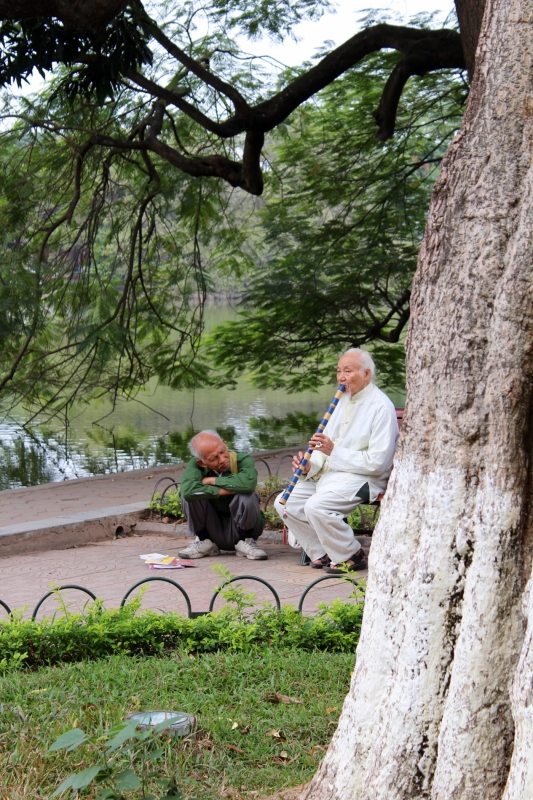∞Originally published in the Vancouver Sun, March 18, 2018∞
Cycling through Vietnam’s steamy Mekong Delta, sweat drenching our backs as we ride under coconut palm canopies, we’re astonished by sights at every turn: men fighting rooster cocks in a clearing, acres of brilliant green rice paddies and women serenely balancing impossibly burdened bicycles. The scenes of rural life are straight out of picture books — sights rivalled only, we discover, by the transporting tastes Vietnam has to offer.
When the heat hits its height, we shelter at a roadside cafe, gulp iced glasses of nuoc mia, fresh-pressed sugarcane and kumquat juice, and gorge on fruit — ruby-red water apples, Asian pears and tangerines dipped in fiery salt seasoning. As we work up the energy to push on to the Delta outpost of Ben Tre, we ask our guide, Nguyen Manh Hai, about his life here before Vietnam opened up to the West as a foodie tourist paradise.
It was, Hai tells us, anything but idyllic. As a 10-year-old growing up outside Can Tho in the 1970s, he used to get down on his knees in his family’s rice paddy and pray for food. It was Hai’s job to go out each day and hunt enough fish or frogs to help feed his parents and six siblings.
These were the lean years of the nation’s post-war recovery between 1975 and 1986. Only after did the Communist government begin economic and political reforms to gradually improve the economy and reduce isolation. The process bore fruit in 1995 when the U.S. normalized relations and international tourism began to grow. That year, just over a million foreigners visited; last year Vietnam attracted more than 10 million tourists, lured by the country’s stunning scenery, a ordability, and incredible food.
That influx means that today, Hai and others now make a living helping visitors discover the region’s welcoming people and abundant cuisine.
While Hai is an ardent advocate of Vietnam eats and experiences, he’s far from the only one. Last year, when former U.S. President Barack Obama made his first trip to Vietnam to visit President Tran Dai Quang, he made a surprise stop at a humble restaurant in Hanoi’s French Quarter. There, he sat on a plastic chair clinking bottled local beer with celebrity chef and TV host Anthony Bourdain. When the episode aired on Bourdain’s Parts Unknown last May, it was a watershed moment for Vietnamese food — and tourism. Here was a sitting president, eating — no, slurping! — local peasant food, and loving every spoonful.
The unlikely pair dined at Bun Cha Huong Lien, a local joint known for bun cha, a soup with a smoky broth and honey sweetness, with juicy BBQ minced pork patties, soft white rice noodles and butter lettuce, cilantro and herb garnishes. Per Obama: “That’s good stuff.” The presidential dinner came to six dollars.
Bourdain is Vietnam’s unoffcial international tour guide, professing his love for the country and its cuisine since the early 2000s. It’s working. One hip New York couple we meet in Hanoi sum up their travel plans in two words: “Anthony Bourdain.” But aside from celebrity endorsement, the true beauty of Vietnam is that the produce is so exceptional, the standards of cleanliness so high and the street food so sensational, anyone can a afford a culinary adventure.
In the spirit of Bourdain our motto for our two-week foodie tour of Vietnam is: go beyond pho. And as we finish our Mekong ride to Ben Tre and putter up the Song Ham Luong river’s water- palm lined canals in search of a meal, we’re deliciously off-book.
When we land at a rustic homestay called Mai’s House, we’re welcomed to an outdoor table laden with steaming sup nui ga, a delicate chicken vegetable soup, crisp cha gio fried spring rolls, fresh goi cuon rice rolls and a whole cooked catfish, which we flake and roll in rice paper with mint and cilantro, before dunking in nuoc mam fish sauce — Vietnam’s version of ketchup. Cam on, we murmur in thanks at each new course, until we can eat no more.
After lunch, we relax by the river drinking cafe sua da, sweet Vietnamese co ee and listen to the sounds of the Mekong, which, improbably, are the sounds of bird calls mingled with karaoke parties blaring from the jungle.
While the mysteries of the Mekong are an undisputed draw, for those lured by Bourdain’s superlatives, Hanoi is ground zero. In the northern capital of more than seven million people and five million motorcycles, concrete towers co-exist with twisted banyans, smart boutiques with sidewalk bia hoi joints serving 40- cent beer flutes to the strains of “Mot hai ba yo!” raucous drinking toasts.
There is much to recommend Hanoi — strolls around leafy Hoan Kiem Lake with its charming island temple Ngoc Son, views of the city’s stunning thousand-year anniversary mural, and outings to dozens of temples, markets and museums, including the Ho Chi Minh Mausoleum — but it’s the city’s food culture that marks it as extraordinary, as we discover on aimless walks through the chaotic and colourful Old Quarter. Street food is everywhere — grilled pineapple with chilli salt, spicy banh mi thit xien nuong baguettes bursting with BBQ pork, pickled cucumbers and cilantro, and warm banh xeo rice crepes studded with shrimp, pork and sprouts — and everything is delicious.
To cram in all the sights and smells, hop on a cyclo on a street food tour (or take your life in your own hands and rent your own) and become one with the river of tra c flowing over Long Bien Bridge — the most bombed and rebuilt span in the world. Cruise around scenic Ho Tay (West Lake) to take in the sunset from the Tran Vu Pagoda, but be sure to stop along the way at street vendors o ering bo bia, a sweet sugarcane snack dusted with coconut and folded into a crispy rice rolls, and kem, Vietnamese ice cream in exotic flavours such as green rice and taro.
Then follow in a former president’s footsteps and head to the French Quarter to Bun Cha Huong Lien, still packed with locals ordering bowls from owner Nguyen Thi Lien, who has now adorned every wall with pictures of Obama and a new English menu boasting the “Combo Obama.” And while, once Bourdained, it’s no longer a hidden gem, the meal is still magical — we discover charcoal-sweet bun cha blows pho — even authentic anise-laced pho ga — out of the bowl.
Wherever we roam, we’re repeatedly floored by Vietnam’s friendliness and flavours. Not to be missed is an overnight sail amid the majestic karst-cli s of Halong Bay where we wander through caves, kayak around islands, explore beaches, practice tai chi at dawn and dine on fresh squid in tart green mango salad and fruit plates featuring dragonfruit, mangosteen and lychees.
Equally appealing is the UNESCO heritage charm of coastal Hoi An with lantern-lit lanes dotted with cooking schools and french cafés, silk shops and spas, tailors and temples, beaches and bars. Here, we sample Hoi An specialities such as banh boa steamed shrimp dumplings and cao lau, a dry pork noodle dish, then track down what Bourdain claims is the best banh mi in the country — care of Phuong Banh Mi — a tiny food stall outside Cho Hoi An market. It’s hyperbole sure, but, once you’ve had one, it’s hard to argue. Phuong’s banh mi deluxe is a warm buttered baguette bursting with roasted chicken and pork, pate and soft egg, gravy and mayonnaise, paper thin cucumbers, tomatoes and onions, pickled carrots, cilantro and mint, nuoc mam and hot sauce. It’s heaven for 25,000 Vietnamese dong — $1.45 Canadian.
For a rush, head south and dive in to cosmopolitan Saigon (Ho Chi Minh City) and spend a day straddling old and new: touring designer malls and wet markets, incense wreathed pagodas and grand opera houses, peaceful botanical gardens and brutal war museums before plunging into the urban nightlife, bar hopping in search of a sip of Vietnamese home brew ruou. Get to sleep early enough to enjoy day trips to the countryside, either exploring the famed Cu Chi war tunnels or biking the Mekong to step back in time and taste simple rural cooking with locals like Hai.
One afternoon back in Hanoi’s Old Quarter, hungry and disoriented, we’re ready to take risks on choose-your-own-adventure dining. We follow our noses to a woman squatting on the curb stirring a steaming pot of something unrecognizable. We sit on plastic stools, gesture, and wait to be surprised. Our bowls boast a light broth, glass noodles, morning glory greens, translucent pate slivers and a nest of pork cracklings. We have no idea what we’re eating, much less what it’s called. We’re dining blind, exploring as our own guides, and thrilled with every bite. Bourdain would be proud.

I’m a different kind of travel writer. I craft long-form, cover-worthy feature-length travel articles with style and substance. I tell travellers not just what to do, but why. Find out how to work with me.































